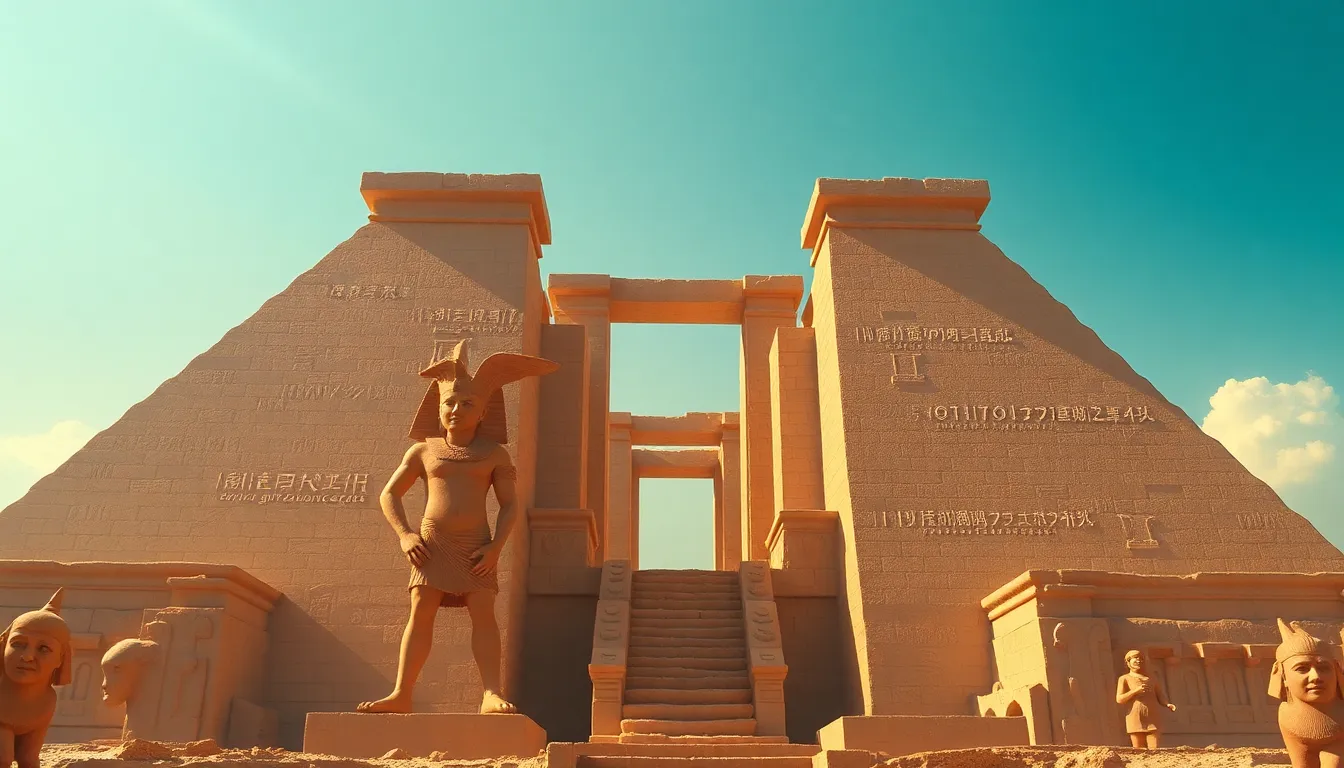The Legacy of the Gods: How Egyptian Myths Shaped Civilization
I. Introduction to Egyptian Mythology
Egyptian mythology is a rich tapestry of gods, goddesses, and ancient stories that have profoundly influenced the culture and civilization of ancient Egypt. It served not only as a means of explaining the world but also as a framework for understanding the relationship between the divine and human experience. The gods were integral to Egyptian society, providing a sense of order and moral guidance.
Key deities such as Ra, the sun god, Osiris, the god of the afterlife, and Isis, the goddess of magic and motherhood, played crucial roles in daily life and spiritual beliefs. Each god had specific responsibilities and attributes, shaping the cultural identity and practices of the Egyptian people.
II. The Role of Myths in Ancient Egyptian Society
Mythology was deeply intertwined with daily life in ancient Egypt. It influenced rituals, holidays, and the agricultural calendar, marking significant events and seasons. Religious festivals often celebrated the stories of the gods, bringing communities together in shared worship and cultural identity.
Moreover, myths were not only religious in nature but also served as a means of legitimizing the authority of the pharaohs. The divine right of kings was often reinforced through myths that depicted rulers as gods or as chosen by the gods, establishing a critical link between governance and the divine.
III. Major Deities and Their Influence
Prominent gods and goddesses in Egyptian mythology include:
- Ra: The sun god, representing creation and life.
- Osiris: The god of the afterlife, resurrection, and fertility.
- Isis: The goddess of magic, motherhood, and healing.
- Horus: The sky god, symbolizing kingship and protection.
- Anubis: The god of mummification and the afterlife.
The stories of these deities significantly impacted cultural practices and beliefs. For instance, the myth of Osiris and Isis, which tells of death and resurrection, shaped burial practices and the Egyptian understanding of the afterlife, emphasizing the importance of rituals associated with death and the journey to the afterlife.
IV. Egyptian Mythology and Architecture
The influence of mythology is vividly reflected in the architecture of ancient Egypt, particularly in the construction of temples and pyramids. These structures were not merely tombs or places of worship; they were designed to honor the gods and facilitate the connection between the divine and the mortal realms.
Key aspects of architectural design influenced by mythology include:
- Temple Layout: Temples were often oriented to align with cosmic events, reflecting the divine order.
- Pyramid Design: Pyramids served as gateways to the afterlife, with their shape symbolizing the rays of the sun.
- Sculptural Reliefs: Depictions of gods and mythological scenes adorned walls, serving both decorative and didactic purposes.
This integration of mythology into architecture not only demonstrated the Egyptians’ artistic prowess but also reinforced their spiritual beliefs and social structures.
V. Myths in Art and Literature
Art and literature in ancient Egypt were heavily influenced by mythology. Gods and mythological scenes were commonly depicted in various forms of art, including:
- Wall Paintings: Found in tombs and temples, illustrating stories of the gods and the afterlife.
- Sculptures: Statues of deities were often created to be placed in temples as objects of worship.
- Jewelry and Artifacts: Items adorned with symbols representing different gods were used in daily life and burial practices.
Literature, such as the “Book of the Dead,” served as a guide for the deceased in the afterlife, incorporating myths about judgment, resurrection, and the journey through the underworld. These texts played a crucial role in shaping Egyptian spiritual beliefs and practices.
VI. The Legacy of Egyptian Myths in Other Cultures
The influence of Egyptian mythology extended beyond its borders, impacting neighboring civilizations and cultures. Ancient Greeks, for instance, were fascinated by Egyptian gods, often assimilating them into their own pantheon. This cross-cultural exchange led to the development of new myths and interpretations.
Key aspects of this legacy include:
- Adoption of Deities: Greek gods such as Hermes and Dionysus were often equated with Egyptian deities.
- Literary Influence: Egyptian myths inspired Greek writers and philosophers, contributing to the broader narrative of Western mythology.
- Artistic Exchange: Egyptian motifs and themes were integrated into Greek and Roman art, reflecting a blend of cultural traditions.
VII. Modern Interpretations and Relevance
Today, Egyptian mythology continues to captivate the imagination, appearing in literature, film, and popular culture. Modern interpretations often seek to understand the relevance of these ancient stories in contemporary society. Themes of love, power, and the afterlife resonate with modern audiences, prompting renewed interest in these ancient narratives.
The resurgence of interest can be seen in:
- Literature: Novels and series that draw inspiration from Egyptian mythology.
- Film and Television: Movies and shows that depict gods and myths, bringing ancient stories to a new generation.
- Video Games: Interactive media that allows players to engage with mythological themes and characters.
VIII. Conclusion: The Enduring Impact of Egyptian Myths
The legacy of Egyptian mythology is vast and enduring, shaping not only ancient civilization but also influencing cultures and societies throughout history. The stories of the gods, their relationships with humanity, and the moral and ethical lessons embedded in these myths continue to resonate today.
Preserving this mythological heritage is essential, as it provides insight into the values, beliefs, and identity of one of history’s most fascinating civilizations. The exploration of Egyptian mythology is not merely an academic pursuit; it is a journey into the human experience, revealing timeless truths that connect us across the ages.




